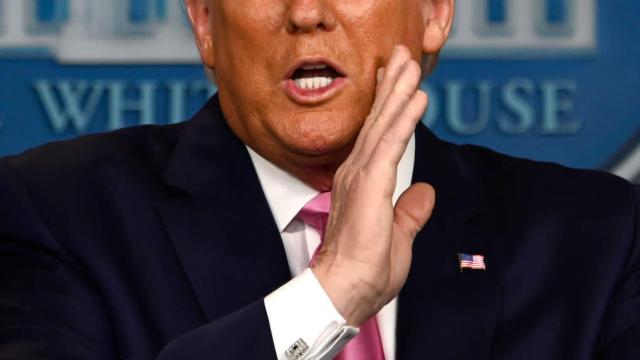On Monday, President Donald Trump once again tried to downplay the seriousness of the coronavirus outbreak that’s now hit over 100 countries and begun spreading within the U.S. He tweeted that the seasonal flu has killed over 37,000 Americans this winter”far more than the 22 deaths from COVID-19 that had been reported in the U.S. at the time of his tweet. Given that, he argued, life (and the economy) should carry on as usual.
Trump isn’t the only one to make this comparison, but it’s now become dangerously short-sighted. Yes, the flu is a yearly threat to our health, one that more people should take seriously. But COVID-19 has the potential to be worse than the typical flu season, and comparing the two isn’t particularly helpful right now.
As of March 10, there have been 118,000 documented cases of COVID-19 worldwide, as well as 4,200 deaths. In the U.S., there have been nearly 800 reported cases and 28 deaths, with large clusters in Washington State, California, and New York. There are a lot of unknowns about how the outbreak will impact the country, but one thing that’s certain is that the numbers are only going to grow.
[referenced url=” thumb=” title=” excerpt=”]
For weeks, U.S. public health labs haven’t been able to not clear when we’re going to be able to screen large groups of people, as countries such as South Korea have done.
That means any official numbers you hear right now are a mirage. And while the scope of the problem is unclear, it’s probably not good. A preprint study released Monday estimated that there may have been anywhere from 1,000 to 9,000 imported cases in the U.S. as of March 1. The study has to be yet released in a scientific journal, meaning its conclusions should be taken with caution. But the figures only include people who travelled to the U.S. from Wuhan, China, not travel-related cases from other countries such as Italy, where the disease has been established for weeks. That estimate also doesn’t include locally caught cases. It was also dated two weeks ago, so total cases in the U.S. have likely exponentially increased since then.
The key point here is that there are a lot of unknowns with COVID-19. The seasonal flu, on the other hand, is very predictable. Researchers know how to track its spread; doctors and hospitals know to expect more sick people around winter time; and a yearly vaccine and antiviral drugs help keep it in check. And while Trump may be bringing up the flu to distract from his administration’s abysmal response to COVID-19, what exactly is the logic here? If a lot of people die from one common thing, it’s OK if a lot of other people die of something else?
Of course, the flu is hardly something to brush off as no big deal. Despite the fact that half the country gets vaccinated against it, the flu still kills tens of thousands per year. During the particularly bad 2017-18 flu season, it’s estimated to have killed 80,000 Americans. Imagine how many more people would have died if half the country hadn’t been vaccinated, and then you’ll have an idea of how deadly COVID-19 could be if we don’t work to contain it.
[referenced url=” thumb=” title=” excerpt=”]
If COVID-19 spreads across the country, it could kill many more people than the flu. Its “true” fatality rate is still up in the air, but even if we took South Korea as a standard”a country with an excellent health care system widely praised for its quick response to COVID-19″the rate would be somewhere around 0.5 per cent. If COVID-19 sickened 35 million Americans, the same number of flu cases last season, that rate would still amount to 175,000 deaths.
These cases and deaths could then overwhelm our already broken health care system, leading to more suffering and economic turmoil. The U.S., compared to countries like South Korea and Italy, has fewer hospital beds available per every 1,000 people. Every bed that goes to someone with COVID-19 strains the resources of a hospital or emergency room that still has to deal with victims of car accidents, heart attacks, and other diseases like, yes, the flu, which is still circulating in the population.
The above example isn’t a prediction, nor an argument that we should just give up and accept the coronapocalypse. If the outbreak is already here and spreading, states, cities, and ordinary people can still do a lot to slow it down. China and South Korea have already started to turn the tide. But it is a reminder that we shouldn’t dismiss the new coronavirus, and we should do what we can to prepare against it, even if that means cancelling social events and taking extra precautions for the time being.
One silver lining is that trying to protect ourselves from COVID-19 should also protect us from other contagious diseases.
“It is important to consider that flu is still here, has killed 20,000-50,000 people this flu season, and the number of hospitalizations from flu is rumoured to have decreased due to people’s fear of coronavirus,” Brandon Brown, an epidemiologist at the University of California, Riverside, told Gizmodo via email. “This is because the same prevention measures can prevent both infections.”
